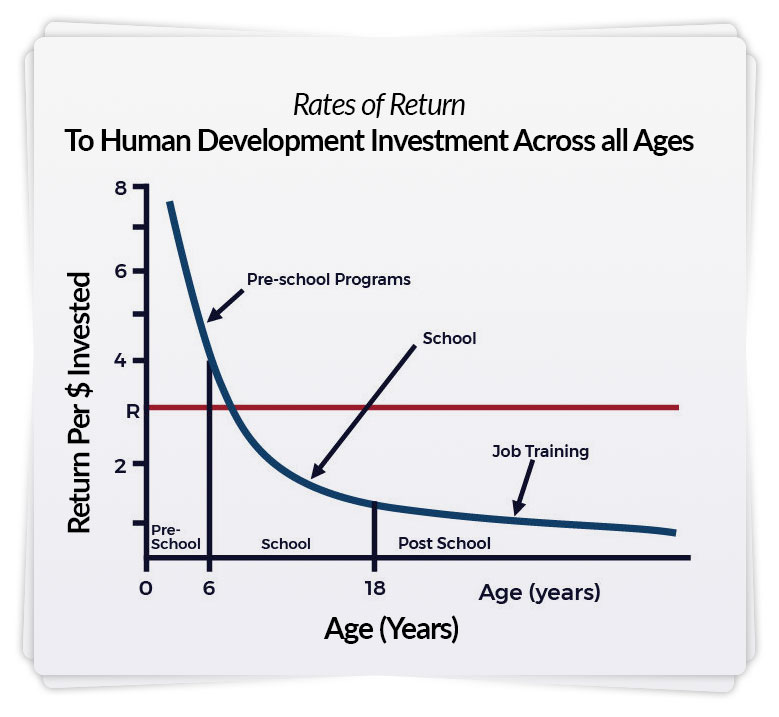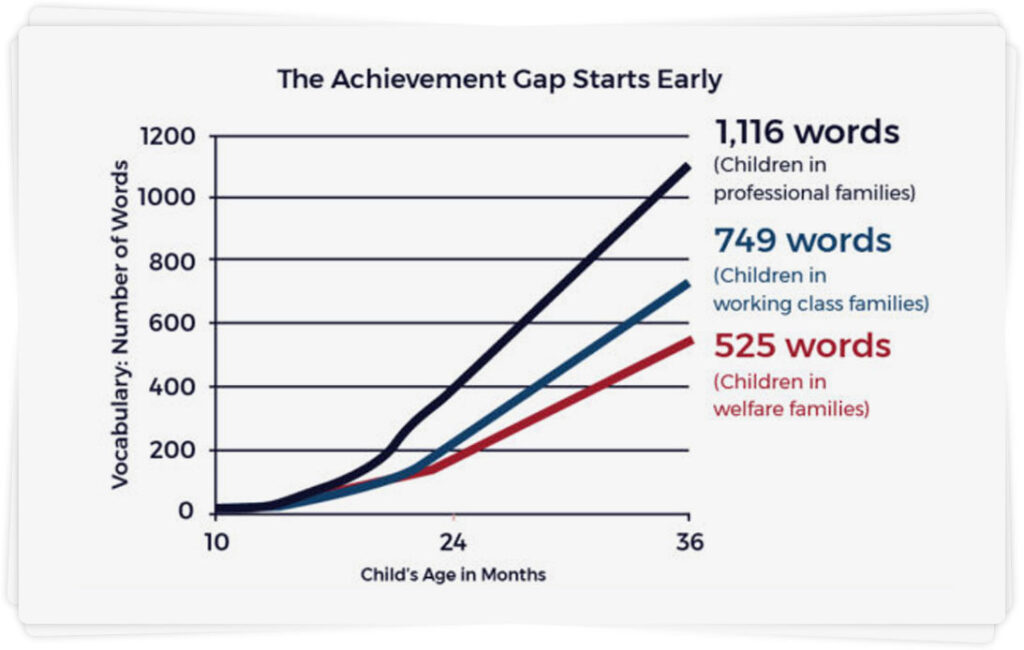A Crucial Foundation For Success

Third grade is widely acknowledged as a critical benchmark year for long-term academic success.
A student not reading at grade level in third grade is four times more likely to drop out of high school.
Whether they’re proficient readers depends on the quality of their learning experiences in the years prior. Like bricks and mortar, learning builds on prior learning. If the foundation is weak, later achievement will falter.
Studies have repeatedly shown that investment in quality early childhood education (ECE) is more life and cost-effective than later remediation. The figure to the right, known as “The Heckman Curve” by Nobel Laureate Prize-winning economist James Heckman, clearly shows how investments in early childhood learning have by far the greatest return. Particularly for disadvantaged young children, the benefits of early childhood education can be as high as $7-$13 for every $1 invested.
Early Childhood Education Deficits Begin Well Before Kindergarten

Early literacy and math deficits begin well before children enter kindergarten, with skill gaps widening along family income lines from as early as 9 months of age and growing exponentially by 24 months.
Research has clearly demonstrated that early literacy and math skills at the kindergarten level, as well as early workforce skills (such as cooperation and paying attention), often predict future academic success.
Early Brain Development Plays a Critical Role

Brain Development
In the first 3 years of early childhood development, a child’s brain is the most impressionable, forming one million new neural connections every second to create the “wiring” that becomes the foundation upon which all later learning is built.

Adult Responsiveness
Adult responsiveness is key to young child brain development. Known as “Serve and Return” interaction, when an infant or young child babbles, gestures, or cries, and an adult responds appropriately with eye contact, words, or a hug, children learn and critical neural connections are built and strengthened in the child’s brain. This is a critical point during which children learn how to interact with other people.

Resilience
Children who face adversity, like poverty, often don’t get appropriate adult responsiveness. In these cases, the way the brain develops is disrupted, and the child is at far greater risk for subsequent physical, cognitive and emotional impairment.
All Learning Environments Impact Early Childhood Education
For young children, the reality is that every environment — whether home, preschool, childcare, or elementary school — is a learning environment. The key is that whatever the context, children are getting quality emotional and cognitive development and building the critical foundation necessary for success in school and life.
Tennessee can make a giant leap forward in early education outcomes by choosing policies that:
- Support parents to be their child’s first effective teacher
- Expand access to high quality childcare and preschool
- Improve instructional quality PreK – 3rd grade
- Build strong accountability and continuous improvement systems for all early education programs.

